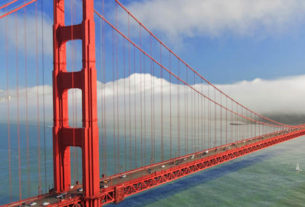Structurally, the territory has its fundamental element in the so-called Canadian shield, the archaeozoic continental mass which constitutes the very backbone of the subcontinent; it is delimited to the S by the furrow of the San Lorenzo River, beyond which the region of the Appalachian corrugations begins, while towards the N it extends to the Arctic archipelagos (the latter, however, marginally affected by the Paleozoic corrugations connected to Greenland) and to the W it is obliterated by sediments that they form the Central Plains, or Interior Plains. The surface of the shield forms a uniform whole and appears as a succession of slight undulations; in the center it is affected by a large depression that gives rise to the Hudson Bay, to the E of which, in the Labrador peninsula, it rises in a sort of plateau, which reaches 1500 m. Surface leveled starting from the Paleozoic and recently subjected to Pleistocene glacial morphogenesis, the shield often appears in the open, with its crystalline and schistose formations; in some areas it is subjected to glacial deposits, among which the morainic hills (drumlins) prevail. There are numerous lakes, large and small, which occupy the depressions or basins closed by morainic barriers. The San Lorenzo furrow is of tectonic origin; it is a rift bordered by reliefs, which opens onto the Atlantic Ocean forming an immense estuary, in a morphologically complex region, where the peripheral effects of the Caledonian corrugation of the Appalachians took place. The paleozoic reliefs appear in the Gaspé peninsula, which delimits the estuary to the S, and in the island of Terranova, where the mountainous area is high without ever reaching altitudes above 1000 meters. The Nova Scotia peninsula has remained foreign to the Paleozoic corrugations, which is a fragment of the ancient shield. According to ehistorylib, all the coasts of Canada are very indented and almost always rocky, reflecting the irregularities of the shield and the great western reliefs. The movements of marine ingress that have given rise to island fragmentation, straits, deep penetrations and, in Labrador, to succession of fjords are very evident (the extreme fragmentation of the Canadian coasts means that they develop for a total of over 28,000 km, islands excluded). The Central Plains occupy approx. 1/5 of the entire territorial surface: they are flat, horizontal, with cretaceous layers superimposed on the most ancient formations. But the deposits of Pleistocene origin are conspicuous, including not only morainic masses, but also and above all layers of Aeolian and postglacial clays, which are löss of this inland region, today defined as a unit with the name of Alsama, from the initials of the three provinces on which it extends (Alberta, Saskatchewan, Manitoba). The plains form the foreland of the Rocky Mountains, which in Canada reach the highest heights in the granite massifs of the southernmost section (Mount Robson, 3954m; Mount Columbia, 3747m); they gradually tend to lower towards the N, where they have their extreme appendage in the Mackenzie mountains, which dominate the depression corresponding to the basin of the river of the same name. As in the United States, the Rocky Mountains overlook vast plateaus to the W (including the Yukon Plateau) located at heights greater than 1000 m and closed to the W by the Coastal Chain system. These include two distinct ranges: the eastern one (Coast Mountains) entirely covers British Columbia, developing parallel to the coast for 1800 km and reaching its maximum peak in Mount Waddington (4012 m); the western coast (Coast Range), largely submerged, is represented by Vancouver Island, from the Alessandro and Regina Carlotta archipelagos and from the smaller islands facing the Pacific coast, also broken by fjords, recesses and promontories, according to the morphology of the Nordic seas. The chain re-emerges on the mainland with the Saint Elias mountains, which culminate in Logan (5959 m), the highest peak in the country, on the border between Canada and Alaska. The extreme marginal section of the Canadian territory is represented by the Arctic archipelagos. They form a characteristic region where the islands, called “lands”, emerge between sea arms covered for many months by the pack, in a distinctly polar environment. The largest are the islands of Victoria, Melville and Banks in the western section, Ellesmere, Devon and Baffin (the largest) in the east; the latter are bordered to the E by some impressive reliefs: the Barbeau Peak of Ellesmere Island reaches 2616m and the Penny Highland of Baffin Island at 2600m. Geologically, the Canadian Arctic islands are mostly formed by paleozoic layers that cover the archaeozoic substrate; everywhere there are traces of glacialism, which is still very active, with large ice caps especially on the reliefs of Baffin, Devon and Ellesmere.




